Abstract 6/2016
Table of content
Andrzej Krych – Motorized man in a modal-split
Piotr Sawicki, Przemysław Kupka – Tram depot location in the public transport system – application of decision support methods
Mariusz Dudek – Analysis of variability of private cars occupancy on the inlet road to the big city on the example of west side of Cracow
Jacek Chmielewski, Tomasz Szczuraszek –Transportation model for Bydgoszcz – Toruń area partnership
Maciej Kruszyna – Modal Split – in a Problem Approach
Wacław Jastrzębski – Pros and Cons of the GEH Statistic for the Evaluation of Traffic Models
Norbert Chamier-Gliszczyński – Mobility model of urban users for the needs of transport activities
Abstracts
Andrzej Krych
Motorized man in a modal-split
Abstract: An extension of conventional studies on complex travels, in order to ensure more effective modelling and forecasting of behaviours of motorised people in the urbanised areas and forming of integrated forecasts, developing strategies and mobility policies is postulated. Given the universal access to private vehicles, a more detailed explanation of the conditions, structure and situations underlying the decision whether to use or not use a vehicle seems to be the key to the development of both a theory as well as the most effective and efficient practice. Attention is drawn to the possibility of defining a normative individual traffic production by respecting a number of demand niches without an alternative, as a significant point of reference, to relations between traffic and parking, especially in the non-public areas and the need to handle annual transport work in researching of transport projects. All data, characteristics and relations at the level of studies and analyses are described and their potential broad application is indicated.
Key words: traffic modeling and forecasting, automotive, mobility policy
Piotr Sawicki, Przemysław Kupka
Tram depot location in the public transport system – application of decision support methods
Abstract: The paper discuss the problem of determining the location of a tram depot in the transport system. Authors propose a five-step decision making procedure, which is composed of: formulating the evaluation criteria, modelling of alternative locations (variants), determining the criteria, selection a decision support method with the construction of the model of preferences, and final selection of the variant. In the article universal set of criteria for selection of the most suitable location of the tram depot problem is also presented. This set consists of five main criteria, and three sub-criteria; and it covers three key aspects, including economic, social and technical issues. The problem finally has been analysed and solved for the tram transport system in Poznań, and the achieved result has been compared with the location decision which had been made previously.
Key words: passenger transport, tram depot location, decision support methods, AHP method
Mariusz Dudek
Analysis of variability of private cars occupancy on the inlet road to the big city on the example of west side of Cracow
Abstract: In recent years intensive development of suburb areas around big cities has been progressing. It results with a significant increase of traffic stream into a city. A large share of individual motorized transport is being observed in the transport service of the suburb areas. It is caused by the dynamic development of motorization. Increase of car occupancy should be included in the list of measures undertaken in the framework of transport policy devoted to those areas. This is why we should better recognize factors affecting intensity of the avail of individual transport. The influence of the season and the volume of the traffic on particular roads is to be analysed. In the end an attempt to estimate car occupancy has been undertaken.
Key words: private transport, suburban transport, car occupancy
Jacek Chmielewski, Tomasz Szczuraszek
Transportation model for Bydgoszcz – Toruń area partnership
Abstract: The article presents assumptions and construction of transportation model developed for the transport study of the Bydgoszcz- Torun Area Partnership (B-TOP), which integrates two independent models of urban areas, suburban and rural areas and the interrelationship between the two neighboring cities. The model renders all forms of transport, including pedestrian, bicycle and public transport (railway transport, trams and buses). This model was used to diagnose the functioning of transport in the analyzed area, the SWOT analysis and the development of predictive models for different scenarios of economic development of the analyzed area. These models have been successfully applied to develop the concept of transport systems development B -TOP.
Key words: transport study, traffic simulation model, transportation demands
Maciej Kruszyna
Modal Split – in a Problem Approach
Abstract: In the literature (theory) the choice of transport means (parameter “modal split”) is modeled from mainstreaming different trip motivation, a category of people, travel time and route. While, in the utilitarian documents (practice), the modal split is treated as a simple indicator characterizing, for example, the objectives of the project (policy) without differentiating it in the above-mentioned aspects. Author draws the attention to the problems related to the interpretation of declared values of the modal split, inter alia, in the context of assessment of the effectiveness of implemented solutions in relation to its objectives and proposes a clarification of the rules for applying this parameter.
Key words: modal split, parameters for assessing policies of mobility, zoning
Wacław Jastrzębski
Pros and Cons of the GEH Statistic for the Evaluation of Traffic Models
Abstract: The article discusses the possibility of applying the GEH statistic for the evaluation of traffic models. The statistic is called after the name of Geoffrey E. Havers, who has applied it during his works for the London’s traffic model in the seventies of last century. It is an empirical formula which allows for greater variance in the measurement for low values and lower deviation for high values. The GEH statistic is recommended by British guidelines for road and bridges modeling and other directives for evaluation of transport models correctness. Discussion on the necessity to apply different limit values of the GEH factor depending on the distribution of the traffic values obtained in the measurements has been conducted in the article.
Key words: traffic modeling, evaluation of traffic models, GEH statistic
Norbert Chamier-Gliszczyński
Mobility model of urban users for the needs of transport activities
Abstract: Various transport related activities are undertaken in order to solve transportation problems: starting from the legislative ones to the practical that are implemented in a given urban area. The mobility of urban users is the common element of all these activities. The term of mobility, mentioned above, has been defined in the EU documents as a new urban culture of mobility. Article constitutes an attempt to formalize the mobility model of urban users in a manner enabling conducting the research aimed at an evaluation of particular transport activities in social, environmental and economic aspects.
Key words: mobility, urban users, transport

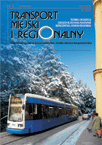 SITK RP
SITK RP 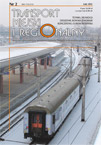 SITK RP
SITK RP 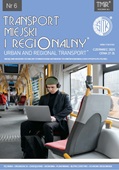 SITK
SITK 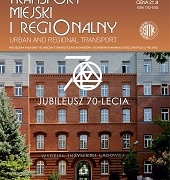 SITK RP
SITK RP 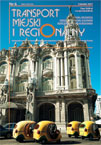 SITK RP
SITK RP 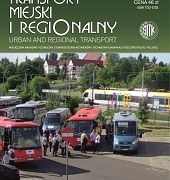

 SITK RP
SITK RP SITK RP
SITK RP